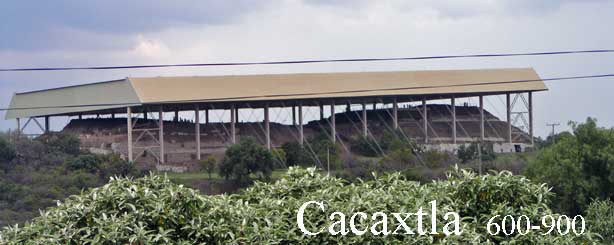 Some time around the year 400 people called Olmeca-Xicallanca migrated from the Gulf coast of the Yucatån peninsula into the Mexican central highlands, settled at Cholula and, after the fall of that neighboring city (ca. 600), flourished at Cacaxtla until 900 but, then, by 1000 were gone themselves. At Cacaxtla, in the present-day state of Tlaxcala, they built a great ceremonial center on this 650-foot-long natural platform during the 8th and 9th centuries. The Gran Basamento or Great Platform, which rises about 80 feet above the surrounding terrain, contains a palace complex that housed a ruling elite as well as temples, plazas, and other ceremonial areas. |
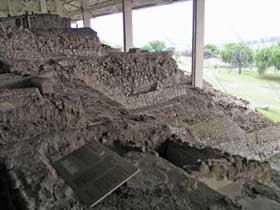
| 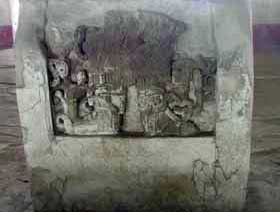
|
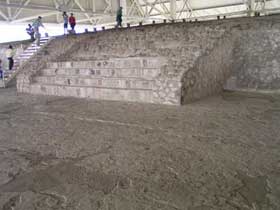 |
Though the protective roof gives the illusion of a single structure, the platform holds the ruins of many architectural features, including the remains of decorated pillars that suggest parts of the platform may have been roofed in ancient times. The photo at left shows a small room atop a low platform and the picture at right shows one of many slope panels that look like bleachers (but probably aren't). |
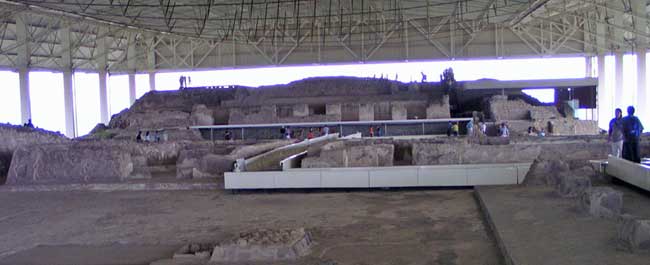
The murals uncovered at Cacaxtla when the site was excavated during the 1970s are not only brilliant in their color but are premier examples of Maya influence in the central highlands. The long mural on the substructure of "Building B" (above) depicts a battle between warriors wearing jaguar skins and feathers. In the section of the mural below the leader of the losing faction is depicted in submission with folded hands. The four murals beneath demonstrate the colors with which the various warriors were depicted. 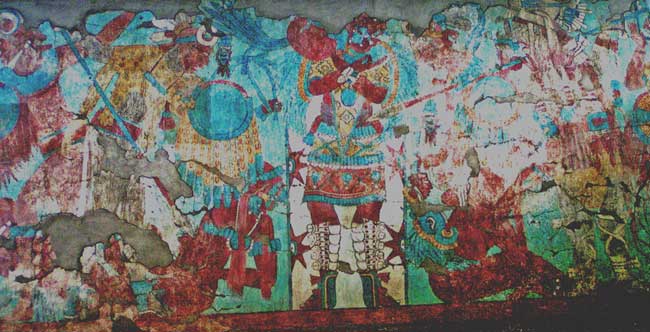
|
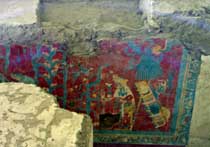 |
 |
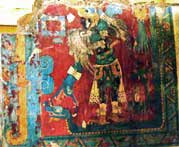 |
 |
 |
Building B rises above people looking at the battle mural. In the lower right is a room with what are supposed to have been rabbit hutches, though they look very like the turkey and macaw pens at Paquimé (further north and several hundred years later). Feathers were important ritual items; did rabbits have had some sort of ritual function—or were they solely for food? |
 Pyramid of the Flowers |
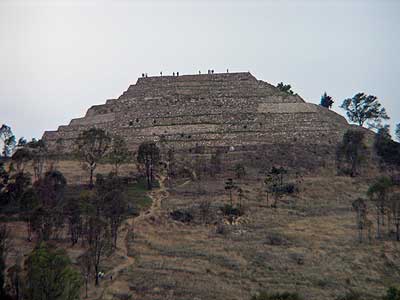 |
Another huge ceremonial center, Xochitecatl (left) lies within walking distance (about 2 km) from Cacaxtla (right). |
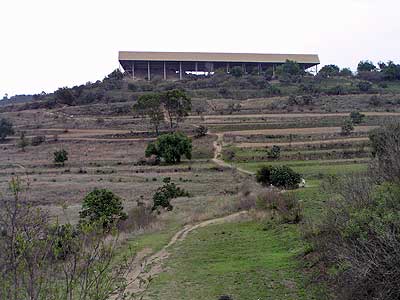 |
The main temple platform, the Pyramid of the Flowers, is joined by two other structures, Platform of the Volcanos and Building of the Serpent, in the first of two plazas that comprise the ceremonial center. These, along with the Spiral Pyramid, in the second plaza, date from as far back as 750 BCE (thus contemporaneous with Chalcatzingo at least in the early stages) and were in use until about 100 BCE. Perhaps an eruption of Popocatépetl had something to do with Xochitecatl's abandonment. The site was reoccupied around 300 CE in a cultural and political alignment with Cacaxtla that lasted until about 900 CE. |
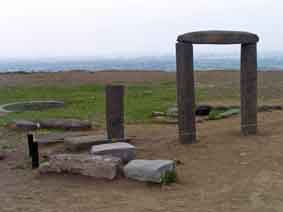 Remnants of the temple that once stood atop the Pyramid of the Flowers |
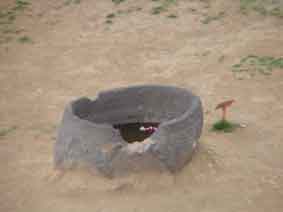 Huge stone basin, designed to hold water, held four sacrificial sculptures when found |
 These carved blocks near the staircase of the Pyramid of Flowers, might have been an altar |
 Building of the Serpent |
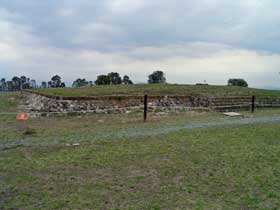 Platform of the Volcanos |
 Spiral Pyramid |